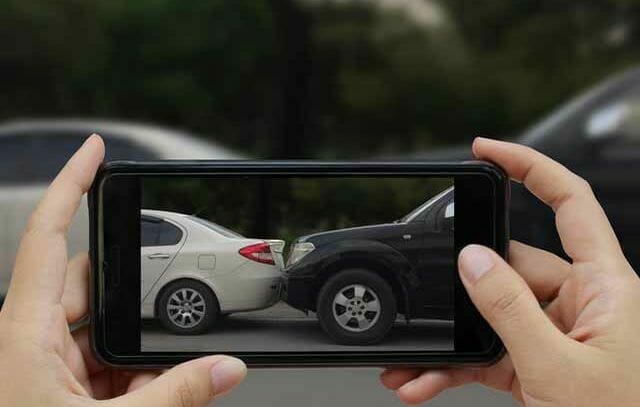A car accident settlement is worth the amount that you and the representatives of the at-fault party agree upon. To get an idea of how much you should demand in payment, calculate the past and future expenses you’ll face because of the crash.
Once you start the process of determining how much compensation you should receive, you’ll notice how complex it can be. That’s because you need to factor in not only how much you’ve lost because of the crash and injury, but also how much you will lose. To further complicate things, you should also seek compensation for what is known as “non-economic” damages, such as pain and suffering.
If you’re already frustrated by all the factors you should be considering, then you can breathe a sigh of relief. Personal injury attorneys exist to help people get the compensation they’re entitled to after being injured in a serious crash. It’s also important to note that not all attorneys will approach your case the same way or give your case the same level of attention. Make sure your attorney is experienced and credentialed before hiring them.
So, now that we have taken a brief look at all the things that go into determining the value of a car accident settlement, let’s dive deeper into the process.
Step One: Determine Your Economic Damages
Economic damages are the expenses you face after a car accident. They are damages that can be calculated by examining bills and lost income you have faced because of a crash and injury. Economic damages include…
- Medical bills
- Lost income (past and future)
- Property damage.
Any other expenses stemming from the car crash lawsuit should also be included in your claim. Though calculating past expenses is easier than predicting how much you will lose because of your crash, an experienced lawyer will be able to help you determine an accurate amount for all past and future losses.
Step Two: Determine Your Non-Economic Damages
non-economic damages are the non-financial consequences of a crash, such as pain and suffering. These types of damages might initially seem harder to calculate, but your attorney will use legal precedents and their experience to find out how much you should demand for the physical and emotional hardships you are facing.
It’s important to note that even though these damages are referred to as “non-economic,” they have very real financial impacts. For example, physical pain restricts people from enjoying everyday activities. Pain can also cause depression, which has health- and work-related consequences. These are factors that your legal representative will consider when demanding payment from the at-fault party and their insurance company.
Step Three: Demand Payment You Are Owed
Your attorney will demand payment from the at-fault driver or the insurance company that represents them. In many cases, it’s the insurance company that fails to give an injured person the compensation they deserve, so they might be held accountable for the costs you are facing. In some cases, a demand letter alone is enough to prompt an insurance company to make the payments you need, but in other cases, it’s the beginning of a process that involves a back-and-forth discussion between your attorney and the representatives of the other driver.
Step Four: Negotiations with Insurers, Lawyers, and the At-Fault Party
If the other side is willing to discuss a potential settlement, then negotiations will begin. Most successful personal injury claims result in a settlement, which means that no trial is necessary. However, most experienced attorneys know that the best way to secure a favorable outcome for clients is to prepare a case as if it is headed to trial. This lets insurance companies, attorneys, and the other driver know that they should take your demands seriously, encouraging the insurance company to settle.
In a settlement, both sides come to an agreement over the amount the injured person is owed. This means that your settlement could end up being less than the amount you initially demanded. However, you are under no obligation to accept the settlement if you would rather go to trial.
Step Five: Decide Whether You Should Accept the Offer
You can consult with your attorney to decide whether to accept the offer made to you by the insurance company. If you are satisfied with the amount, then you can accept the offer, at which point you will start receiving payment in accordance with the terms set forth in the settlement. If you do not wish to accept the offer, the matter can move forward to a trial, where your attorney and the other side will make cases in front of a judge and jury.
Whether you should accept the offer depends on many factors, including your willingness to pursue the matter in court and your satisfaction with the settlement amount presented to you. Rely on your attorney’s advice. They will have experience in these cases, so they can tell you whether your case has a strong chance in court, or if accepting the settlement that you’ve been offered is the best course of action. Ultimately, the decision will be up to you.
So, What Is the Value of My Car Accident?
As you can see, there are a ton of factors to consider when finding out how much you are owed. If you’re still asking, “What is the value of my car accident?” then consider reaching out to an attorney to start the process.
If you aren’t sure whether you want to move forward with a claim, but you’d like to know a little more about your legal options, the accident and injury law office of Terry Bryant offers free consultations. We believe that everyone deserves to be treated fairly, and we use the legal system to hold negligent drivers and insurance companies accountable for the payment they owe our clients.
Terry Bryant is a former judge and Board Certified personal injury attorney (certified in personal injury trial law by the Texas Board of Legal Specialization, since 1986). He and his hand-picked team know the law, and we want to help you get your life back after a serious vehicle wreck. We encourage you to contact us today to schedule your free case evaluation.
Attorney Terry Bryant
 Terry Bryant is Board Certified in personal injury trial law, which means his extensive knowledge of the law has been recognized by the Texas Board of Legal Specialization, setting him apart from many other injury attorneys. The 22 years he spent as a Municipal Judge, Spring Valley Village, TX also provides him keen insight into the Texas court system. That experience also helps shape his perspective on personal injury cases and how they might resolve. This unique insight benefits his clients. [ Attorney Bio ]
Terry Bryant is Board Certified in personal injury trial law, which means his extensive knowledge of the law has been recognized by the Texas Board of Legal Specialization, setting him apart from many other injury attorneys. The 22 years he spent as a Municipal Judge, Spring Valley Village, TX also provides him keen insight into the Texas court system. That experience also helps shape his perspective on personal injury cases and how they might resolve. This unique insight benefits his clients. [ Attorney Bio ]


 Terry Bryant is Board Certified in personal injury trial law, which means his extensive knowledge of the law has been recognized by the Texas Board of Legal Specialization, setting him apart from many other injury attorneys. The 22 years he spent as a Municipal Judge, Spring Valley Village, TX also provides him keen insight into the Texas court system. That experience also helps shape his perspective on personal injury cases and how they might resolve. This unique insight benefits his clients. [
Terry Bryant is Board Certified in personal injury trial law, which means his extensive knowledge of the law has been recognized by the Texas Board of Legal Specialization, setting him apart from many other injury attorneys. The 22 years he spent as a Municipal Judge, Spring Valley Village, TX also provides him keen insight into the Texas court system. That experience also helps shape his perspective on personal injury cases and how they might resolve. This unique insight benefits his clients. [ 

